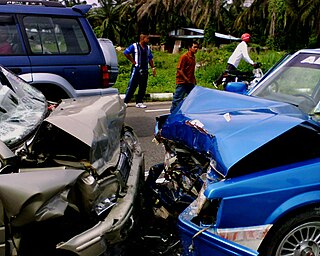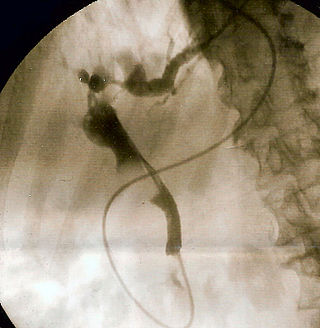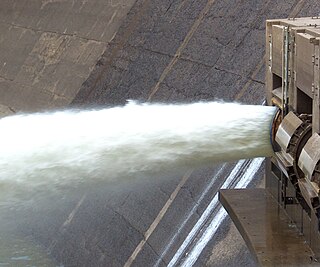Negligence is a failure to exercise appropriate and/or ethical ruled care expected to be exercised amongst specified circumstances. The area of tort law known as negligence involves harm caused by failing to act as a form of carelessness possibly with extenuating circumstances. The core concept of negligence is that people should exercise reasonable care in their actions, by taking account of the potential harm that they might foreseeably cause to other people or property.
In law and insurance, a proximate cause is an event sufficiently related to an injury that the courts deem the event to be the cause of that injury. There are two types of causation in the law: cause-in-fact, and proximate cause. Cause-in-fact is determined by the "but for" test: But for the action, the result would not have happened. The action is a necessary condition, but may not be a sufficient condition, for the resulting injury. A few circumstances exist where the but-for test is ineffective. Since but-for causation is very easy to show, a second test is used to determine if an action is close enough to a harm in a "chain of events" to be legally valid. This test is called proximate cause. Proximate cause is a key principle of insurance and is concerned with how the loss or damage actually occurred. There are several competing theories of proximate cause. For an act to be deemed to cause a harm, both tests must be met; proximate cause is a legal limitation on cause-in-fact.

English tort law concerns the compensation for harm to people's rights to health and safety, a clean environment, property, their economic interests, or their reputations. A "tort" is a wrong in civil, rather than criminal law, that usually requires a payment of money to make up for damage that is caused. Alongside contracts and unjust enrichment, tort law is usually seen as forming one of the three main pillars of the law of obligations.
Ex turpi causa non oritur actio is a legal doctrine which states that a plaintiff will be unable to pursue legal relief and damages if it arises in connection with their own tortious act. Particularly relevant in the law of contract, tort and trusts, ex turpi causa is also known as the illegality defence, since a defendant may plead that even though, for instance, he broke a contract, conducted himself negligently or broke an equitable duty, nevertheless a claimant by reason of his own illegality cannot sue. The UK Supreme Court provided a thorough reconsideration of the doctrine in 2016 in Patel v Mirza.
Causation is the "causal relationship between the defendant's conduct and end result". In other words, causation provides a means of connecting conduct with a resulting effect, typically an injury. In criminal law, it is defined as the actus reus from which the specific injury or other effect arose and is combined with mens rea to comprise the elements of guilt. Causation only applies where a result has been achieved and therefore is immaterial with regard to inchoate offenses.
Causation in English law concerns the legal tests of remoteness, causation and foreseeability in the tort of negligence. It is also relevant for English criminal law and English contract law.
Breaking the chain refers in English law to the idea that causal connections are deemed to finish. Even if the defendant can be shown to have acted negligently, there will be no liability if some new intervening act breaks the chain of causation between that negligence and the loss or damage sustained by the claimant.
In the English law of negligence, the acts of the claimant may give the defendant a defence to liability, whether in whole or part, if those acts unreasonably add to the loss.
In English law, remoteness between a cause of action and the loss or damage sustained as a result is addressed through a set of rules in both tort and contract, which limit the amount of compensatory damages available for a wrong.
McGhee v National Coal Board [1972] UKHL 7, 1 W.L.R. 1, is a leading tort case decided by the House of Lords. The Lords held that where a breach of duty has a material effect on the likelihood of injury then the subsequent injury will be said to have been caused by the breach. This approach was taken to resolve injustice arising from the orthodox 'but for' test for factual causation. Otherwise, under the 'but for' test, multiple potential causes of harm would hold equal causal weighting, making it impossible to establish a greater than 50% probability of one cause.

Page v Smith[1995] UKHL 7 is a decision of the House of Lords. It is part of the common law of England and Wales.

Fairchild v Glenhaven Funeral Services Ltd [2002] UKHL 22 is a leading case on causation in English tort law. It concerned malignant mesothelioma, a deadly disease caused by breathing asbestos fibres. The House of Lords approved the test of "materially increasing risk" of harm, as a deviation in some circumstances from the ordinary "balance of probabilities" test under the "but for" standard.
Hotson v East Berkshire Area Health Authority [1987] 2 All ER 909 is an English tort law case, about the nature of causation. It rejects the idea that people can sue doctors for the loss of a chance to get better, when doctors fail to do as good a job as they could have done.

Barker v Corus (UK) plc [2006] UKHL 20 is a notable House of Lords decision in the area of industrial liability in English tort law, which deals with the area of causation. In this case, the House of Lords reconsidered its ruling in the earlier landmark case Fairchild v Glenhaven Funeral Services Ltd concerning the liability of multiple tortfeasors.

Parsons (Livestock) Ltd v Uttley Ingham & Co Ltd [1978] QB 791 is an English contract law case, concerning remoteness of damage. In it, the majority held that losses for breach of contract are recoverable if the type or kind of loss is a likely result of the breach of contract. Lord Denning MR, dissenting on the reasoning, held that a distinction should be drawn between losses for physical damage and economic losses.

Bailey v Ministry of Defence [2008] EWCA Civ 883 is an English tort law case. It concerns the problematic question of factual causation, and the interplay of the "but for" test and its relaxation through a "material contribution" test.

Gregg v Scott [2005] UKHL 2 is an English tort law case, on the issue of loss of a chance, in causation. It affirms the principle of Hotson v East Berkshire Area Health Authority, on a narrow margin of 3 to 2. Lord Nicholls' dissent is of particular note, in arguing that loss of a chance should be actionable.

Lubbe v Cape Plc [2000] UKHL 41 is a conflict of laws case, which is also highly significant for the question of lifting the corporate veil in relation to tort victims. In this case it was alleged, and postulated by the House of Lords, that in principle it is possible to show that a parent company owes a direct duty of care in tort to anybody injured by a subsidiary company in a group.
Swindle v Harrison [1997] 4 All ER 705 is an English trusts law case, concerning remedies for breach of trust.

The floodgates principle, or the floodgates argument, is a legal principle which is sometimes applied by judges to restrict or limit the right to make claims for damages because of a concern that permitting a claimant to recover in such situations might open the metaphorical "floodgates" to large numbers of claims and lawsuits. The principle is most frequently cited in common law jurisdictions, and in English tort law in particular.








